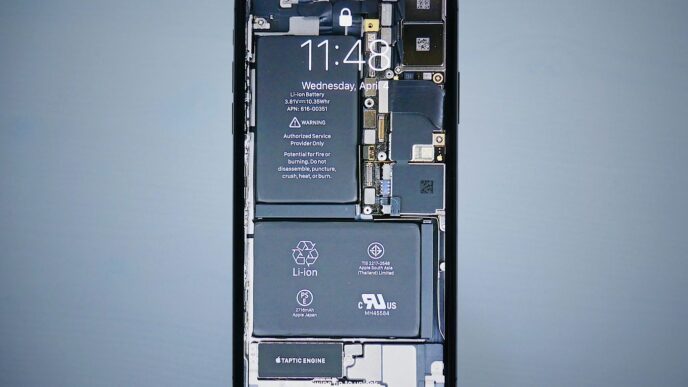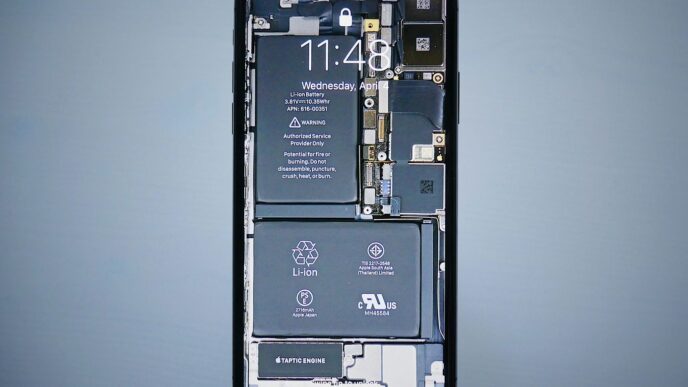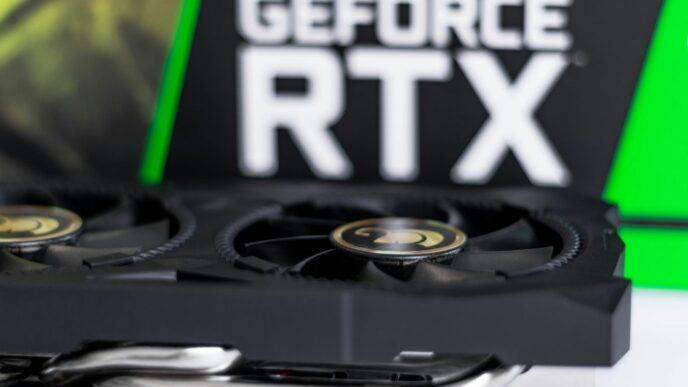Looking for good deals on electronics can be tough, especially with so many places to shop. But guess what? Your local gadget store might just be the best spot to find some real bargains. You don’t always need to go online or to big box stores to save money. This article will show you how to find great prices and make smart buys right in your own neighborhood gadget store.
Key Takeaways
- Always check out the open box and clearance areas first. You can find some almost-new stuff for way less money.
- Don’t be afraid to ask about price matching. Many gadget stores will match competitor prices, saving you a trip.
- Timing matters a lot. Think about when new models come out; older versions often get big discounts then.
- Before buying used electronics, always check the warranty situation. A good warranty can save you headaches later.
- It never hurts to ask if there are any upcoming sales or if they can give you a better deal. Sometimes, just asking works!
Uncovering Hidden Gems At Your Local Gadget Store
Ever wonder how some folks always seem to snag the best deals at the gadget store? It’s not just luck; it’s knowing where to look. Your local store is probably hiding some serious bargains, you just need to know the secret spots. It’s like a treasure hunt, but instead of gold, you find a sweet new tablet or a pair of headphones for way less than you expected. Let’s dig into where these deals are hiding.
Exploring Open Box Bargains
Open box items are a goldmine if you’re looking to save some cash. These aren’t used gadgets, usually. They’re products that someone bought, opened, and then returned for whatever reason. Maybe the color wasn’t right, or they just changed their mind. The store can’t sell them as new, so they mark them down. You can often find items that are practically brand new, just without the factory seal. Before you buy, always check a few things:
- Make sure all the accessories are there. Sometimes a charger or a cable goes missing.
- Look for any cosmetic damage. A small scratch might not bother you, but a big dent is a no-go.
- Ask about the return policy for open box items. It might be different from new products.
Navigating Clearance Sections
Clearance sections are another spot where prices drop significantly. Stores put items here when they’re making room for new inventory, or when a product isn’t selling as well as they hoped. It’s not always the latest and greatest tech, but you can find some really solid gadgets that still do the job perfectly fine. Think about it: a slightly older model of a smart speaker might still sound amazing and cost half the price. When you’re browsing the clearance rack, keep these tips in mind:
- Know what you need before you go. Don’t just buy something because it’s cheap.
- Check the warranty. Sometimes clearance items have a shorter warranty period.
- Compare prices. Just because it’s on clearance doesn’t mean it’s the absolute lowest price out there. You can check Sainsbury’s latest deals for comparison.
Spotting Floor Model Discounts
Floor models are those display units you see in the store. They’ve been handled, turned on and off a bunch, and maybe even dropped a time or two (hopefully not!). Because they’re not
Maximizing Savings At Any Gadget Store

Leveraging Price Match Policies
So, you found a sweet deal online, but you really want to buy it in person? Don’t just assume you’re out of luck. Many gadget stores, especially the bigger chains, have price match policies. This means if you find the exact same item cheaper at a competitor, they might match that lower price. It’s worth asking, because you could save a good chunk of change without waiting for shipping. Before you head to the store, do a quick check on their website or call ahead to understand their specific rules. They usually have conditions, like the competitor needing to be a local store or an authorized online retailer. Sometimes, they won’t match prices from places like Amazon or eBay, so be prepared for that. But if it’s another big box store, you’ve got a good shot. It’s all about doing your homework first.
Understanding Store Loyalty Programs
If you’re a regular at a particular gadget store, or even if you just plan on making a few big purchases there, signing up for their loyalty program is a no-brainer. These programs are designed to reward repeat customers, and the perks can really add up. Think about it:
- You might earn points on every purchase, which can then be redeemed for discounts on future buys.
- Members often get early access to sales or exclusive promotions that aren’t available to the general public.
- Some programs offer special birthday discounts or even free shipping on online orders.
It’s usually free to join, and all it takes is providing your email address. Over time, those small rewards can turn into significant savings, especially if you’re buying a lot of tech. It’s like getting a little thank you for being a loyal customer.
Utilizing Manufacturer Rebates
Manufacturer rebates are one of those things that people often forget about, but they can be a fantastic way to save money after you’ve made a purchase. It works like this: you buy a product, and then the manufacturer offers you money back, usually in the form of a check or a prepaid card, after you submit proof of purchase. It’s not an instant discount, but it’s still money back in your pocket. Here’s what you need to know:
- Always check the product packaging or the store’s website for any available rebates before you buy.
- Rebates often have strict deadlines for submission, so don’t procrastinate. Mark it on your calendar!
- You’ll typically need to mail in the original UPC code from the box, a copy of your receipt, and a completed rebate form.
It can feel like a bit of a hassle, but for bigger ticket items, the rebate amount can be substantial. It’s like finding a hidden discount after the fact. For those interested in the broader tech scene, especially in places like Austin’s tech hub, understanding these savings strategies can be quite useful.
Strategic Shopping For Tech Enthusiasts
Timing Your Purchases Wisely
When you’re looking to buy new tech, patience can really pay off. Waiting for the right moment to buy can save you a lot of money. Big sales events are usually the best times to snag a deal. Think about Black Friday, Cyber Monday, or even Amazon Prime Day. These aren’t just for online stores; local gadget shops often match these sales or have their own special promotions. Also, keep an eye out for product release cycles. When a new model of a phone or laptop comes out, the older versions often get a price drop. It’s a good way to get a still-great device without paying top dollar.
Researching Before You Buy
Don’t just walk into a store and pick the first thing you see. Doing your homework beforehand is super important. You want to know what you’re getting into. Look up reviews, compare specs, and figure out what features you actually need. Sometimes, a slightly cheaper model might have all the features you care about, and you won’t miss the extra bells and whistles of the more expensive one. There are tons of tech blogs and review sites out there that can help you make an informed decision. Checking out product discovery platforms can also give you a good idea of what’s new and popular.
Comparing Online And In-Store Prices
It’s a common thought that online prices are always better, but that’s not always true. Sometimes, local stores have sales that beat online deals, especially when you factor in shipping costs or immediate availability. It’s a good idea to check both. Before you head to the store, pull up the prices from a few major online retailers on your phone. Then, when you’re at the store, you can quickly compare. If the in-store price is a bit higher, you might even be able to ask if they’ll match the online price. It never hurts to ask!
Finding Value In Pre-Owned Electronics

Buying used electronics can feel like a gamble, right? But if you know what to look for, you can snag some really great deals. It’s all about being smart and doing your homework before you hand over your cash. Think of it like buying a used car – you wouldn’t just buy the first one you see without checking it out, would you? The same goes for gadgets. You can save a lot of money, but you need to be careful.
Assessing Refurbished Devices
Refurbished devices are a bit different from just plain used. These are items that have been returned, maybe had a small defect, or were just display models. Then, they get sent back to the manufacturer or a certified refurbisher who fixes them up, cleans them, and makes sure they’re working like new. Always check who did the refurbishing. If it’s the original manufacturer, that’s usually a good sign. They’ll often replace faulty parts and put them through rigorous testing. Third-party refurbishers can be good too, but you need to make sure they’re reputable. Look for details on what exactly was done to the device. Was it just a quick wipe-down, or did they actually replace components? Sometimes, you can get a nearly new device for a fraction of the price. It’s a smart way to get quality electronics without breaking the bank.
Understanding Warranty Options
This is a big one when you’re looking at pre-owned gadgets. A lot of people assume used means no warranty, but that’s not always true. Here’s what to look for:
- Manufacturer Refurbished Warranty: Often, devices refurbished by the original manufacturer come with a warranty, sometimes even a full year, just like a new product. This is the gold standard.
- Seller Warranty: Some reputable sellers of used or refurbished items will offer their own warranty. This might be shorter, like 30 or 90 days, but it gives you some peace of mind in case something goes wrong right after you buy it.
- No Warranty: If there’s no warranty at all, you’re taking a bigger risk. This doesn’t mean you shouldn’t buy it, but you should factor that into your decision and perhaps negotiate a lower price.
Always ask about the warranty before you buy. Get it in writing if you can. It’s your safety net.
Inspecting Used Gadgets Thoroughly
Before you buy any used gadget, you need to give it a good once-over. Don’t be shy! This is your money. Here’s a checklist of things to inspect:
- Physical Condition: Look for scratches, dents, cracks, or any signs of drops. Check the screen for dead pixels or discoloration. Make sure all buttons and ports are intact and not wobbly.
- Functionality: Turn it on! Test all the basic functions. Does the camera work? Do the speakers sound clear? Does it connect to Wi-Fi? If it’s a phone, make a test call. If it’s a laptop, type on the keyboard and use the trackpad.
- Battery Life: This is crucial for portable devices. Ask about the battery health. Many devices, like smartphones, have built-in tools to check battery capacity. A significantly degraded battery means you’ll be charging it constantly.
- Accessories: Does it come with the original charger and cables? Are they in good condition? Sometimes, missing or damaged accessories can add hidden costs.
- Software: Check if the device has been factory reset. You don’t want someone else’s data or accounts still on it. Make sure it’s ready for you to set up as new.
Beyond The Sales Rack At Your Gadget Store
Sometimes, the best deals aren’t sitting right there on the sales rack. You might have to do a little digging, or even just ask the right questions. It’s all about being proactive and knowing that stores often have more flexibility than you might think, especially when it comes to moving inventory or keeping a customer happy. Don’t be shy about exploring options that aren’t immediately obvious.
Asking About Upcoming Promotions
It’s a good idea to just ask store employees about what’s coming up. They often have a heads-up on sales or special events before they’re publicly advertised. This can give you a real advantage, letting you plan your purchases to coincide with the best possible prices. You might find out about a weekend sale or a holiday promotion that’s just around the corner.
- Inquire about seasonal sales (e.g., back-to-school, Black Friday).
- Ask if there are any unadvertised manager specials.
- Check for upcoming product launches that might trigger price drops on older models.
Negotiating For Better Deals
Believe it or not, you can sometimes negotiate prices, especially on higher-priced items or floor models. It doesn’t always work, but it never hurts to try. Being polite and having a clear reason for your request can go a long way. Maybe a competitor has a slightly lower price, or you’re buying multiple items. The worst they can say is no.
- Point out minor cosmetic flaws on display items.
- Mention a slightly lower price from a competitor (if true).
- Ask for a bundle discount if buying several accessories with a main gadget.
Signing Up For Email Alerts
This is probably the easiest way to stay in the loop. Most gadget stores have email newsletters that announce sales, new products, and exclusive loyalty program benefits. You’ll get the information delivered right to your inbox, so you don’t have to keep checking their website or visiting the store. It’s a simple step that can save you money over time.
- Look for a sign-up form on the store’s website.
- Confirm your subscription to receive all alerts.
- Check your spam folder regularly, just in case.
Smart Buys For Every Budget At A Gadget Store
When you’re trying to get the most bang for your buck at a gadget store, it’s not just about finding the lowest price. It’s about making smart choices that fit your needs and your wallet. You can totally snag some great tech without emptying your savings, even if you’re on a tight budget. It just takes a little bit of planning and knowing what to look for. Think about what you really need versus what’s just a nice-to-have. Sometimes, the flashiest new thing isn’t always the best option for your everyday use.
Prioritizing Essential Features
Before you even step foot in the store, or start browsing online, you should have a pretty good idea of what you actually need. Don’t get sidetracked by all the bells and whistles if they don’t serve a real purpose for you. For example, if you’re buying a new laptop, do you really need a super-powerful graphics card if you’re just going to be doing word processing and browsing the internet? Probably not. Focus on the core functions that are non-negotiable for your daily tasks. Make a list of these must-have features and stick to it. This helps you avoid overspending on things you won’t use.
- What’s the primary use for this gadget?
- Are there any specific software or apps I need to run?
- What’s my absolute maximum budget?
- How long do I expect this gadget to last?
Considering Off-Brand Alternatives
It’s easy to get caught up in the hype of big-name brands, but sometimes, the best deals are found with lesser-known companies. Many off-brand alternatives offer similar performance and features to their more expensive counterparts, often at a fraction of the cost. These brands might not have the same marketing budget, but that doesn’t mean their products are inferior. Do a little research online, read some reviews, and you might be surprised by the quality you can get for less. For example, when looking for affordable tech deals, consider exploring options from Cellucity’s smart shopping opportunities.
Investing In Durable Accessories
While it might seem counterintuitive to spend more on accessories when you’re trying to save money, investing in durable, high-quality accessories can actually save you a lot in the long run. Think about phone cases, screen protectors, or even good quality charging cables. A cheap case might break easily, leaving your expensive phone vulnerable to damage. A flimsy charging cable could fray and need replacing often. Spending a little extra upfront on accessories that are built to last means you won’t have to replace them as frequently, and they’ll do a better job of protecting your main gadget. It’s like buying good tires for your car – they might cost more initially, but they’ll keep you safer and last longer.
Wrapping It Up
So, there you have it. Finding good deals at your local gadget store isn’t rocket science, but it does take a little bit of effort. Just remember to do your homework before you go, ask questions, and don’t be afraid to walk away if something doesn’t feel right. You’ll be surprised what you can find if you just keep your eyes open. Happy shopping!
Frequently Asked Questions
What exactly are “open box” items?
Open box items are products that have been returned by customers. They’re usually in great shape, sometimes just missing the original packaging. Stores often sell them at a lower price because they’re not brand new anymore, even if they’ve barely been touched.
What’s the deal with clearance sections?
Clearance sections are where stores put items they want to sell quickly to make room for new stuff. These are often older models or things they won’t carry anymore. You can find some really good deals here, but the stock changes a lot.
Are floor models a good buy?
Floor models are the display items you see in the store. They’ve been handled by customers, but they’re usually fully working. Stores sell them cheaper because they’re no longer in perfect, untouched condition. It’s a good way to get a slightly used item for less.
How does price matching work?
Price matching means if you find the same item for less at another store, your local gadget store might sell it to you for that lower price. It’s a way for them to keep your business. Always ask if they have a price match policy before you buy.
What are store loyalty programs?
Loyalty programs are like a thank-you from the store for shopping there often. You might earn points for every dollar you spend, which can then be used for discounts on future purchases. Sometimes you get special offers or early access to sales too.
What’s a manufacturer rebate?
Manufacturer rebates are when the company that made the product gives you some money back after you buy it. You usually have to fill out a form and mail it in with your receipt. It’s a bit of extra work, but it can save you a good chunk of change.














